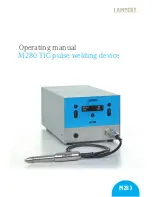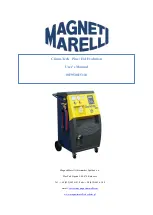
37
VIPER MIG 135
OPERATING MANUAL
15. MIG Troubleshooting
15.1 Excessive Spatter
•
Wire feed speed set too high:
Select lower wire feed speed.
•
Voltage too high:
Select a lower voltage setting.
•
Wrong polarity set:
Select the correct polarity for the wire being used - see machine setup guide.
•
Stick out too long:
Bring the torch closer to the work.
•
Contaminated base metal:
Remove materials like paint, grease, oil, and dirt, including mill scale from base metal.
•
Contaminated MIG wire:
Use clean, dry, rust-free wire. Do not lubricate the wire with oil, grease etc.
•
Inadequate gas flow or too much gas flow:
Check the gas is connected, check hoses, gas valve and torch are not
restricted. Set the gas flow between 8-12L/min flow rate. Check hoses and fittings for holes, leaks etc.
15.2 Porosity - Small cavities or holes resulting from gas pockets in
weld metal
•
Wrong gas:
Check that the correct gas is being used.
•
Inadequate gas flow or too much gas flow:
Check the gas is connected, check hoses, gas valve and torch are not
restricted. Set the gas flow between 8-12L/min flow rate. Check hoses and fittings for holes, leaks etc. Protect the
welding zone from wind and drafts.
•
Moisture on the base metal:
Remove all moisture from base metal before welding.
•
Contaminated base metal:
Remove materials like paint, grease, oil, and dirt, including mill scale from base metal.
•
Contaminated MIG wire:
Use clean, dry, rust-free wire. Do not lubricate the wire with oil, grease etc.
•
Gas nozzle clogged with spatter, worn or out of shape:
Clean or replace the gas nozzle.
•
Missing or damaged gas diffuser:
Replace the gas diffuser.
•
MIG torch Euro connect O-ring missing or damaged:
Check and replace the O-ring.
15.3 Wire stubbing during welding
•
Holding the torch too far away:
Bring the torch closer to the work and maintain stick out of 5-10mm.
•
Welding voltage set too low:
Increase the voltage.
•
Wire feed speed set too high:
Decrease the wire feed speed.
15.4 Lack of fusion - Failure of weld metal to fuse completely with
base metal or a proceeding weld bead
•
Contaminated base metal:
Remove materials like paint, grease, oil, and dirt, including mill scale from base metal.
•
Not enough heat input:
Select a higher voltage range and/or adjust the wire speed to suit.
•
Improper welding technique:
Keep the arc at the leading edge of the weld pool. Gun angle to work should be
between 5° & 15°. Direct the arc at the weld joint. Adjust work angle or widen groove to access bottom during welding.
Momentarily hold arc on side walls if using weaving technique.
15.5 Excessive penetration - Weld metal melting through base metal
•
Too much heat:
Select a lower voltage range and/or adjust the wire speed to suit. Increase travel speed.








































